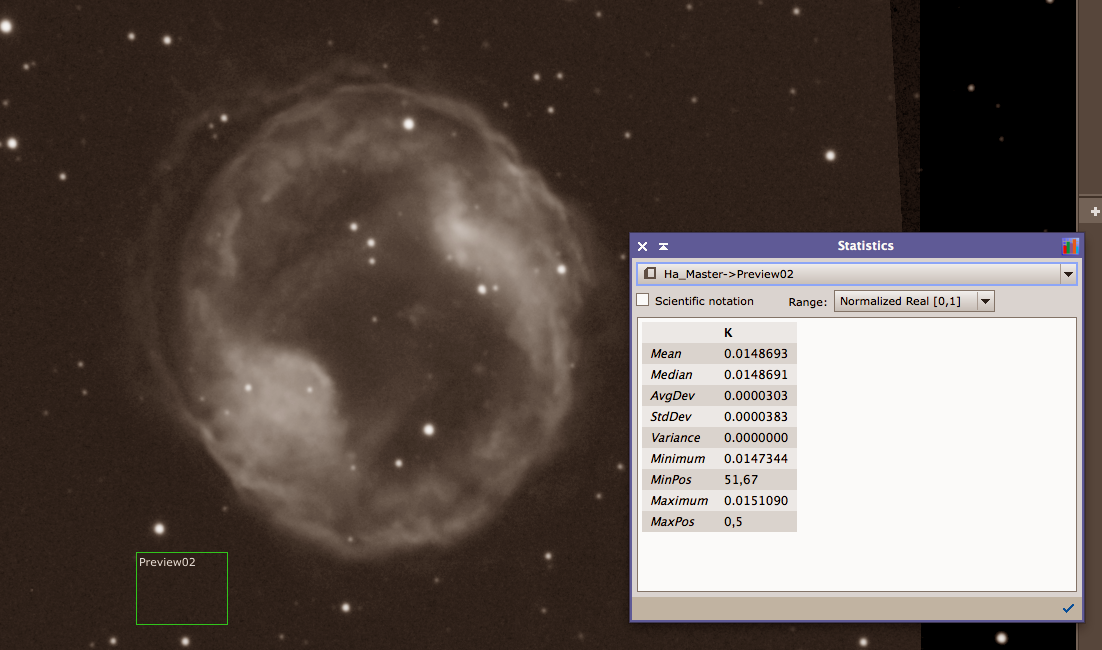Thanks

I tried the squaring method on our Ha data, and it seems to work flawlessly. I used...
Stack#*((Mean value/StdDev value)^2)
...for each stack, using a small preview together with PI Statistics to measure the values above:

and ended up with the following (very long) expression:
emberson_alle_filer_DBE_registered*((148486/1430)^2)+MR_Ha_12x1800_DBE_registered*((148433/816)^2)+MR_Ha_8x1800s_DBE_registered*((148387/888)^2)+MS_Ha_47x600s_registered*((148433/886)^2)+Paul_Ha*((148444/952)^2)+TOC_Ha_registered*((148463/769)^2)
Then I used LinearFit on the resulting image, and the result was the best so far:

Using a rough estimate, I have 6 images with an average StdDev of about 1000. That should give a StdDev of the Master stack of 1000/sqrt(6)=408.
Please correct me, if I've done something wrong.
Next up is OIII, SII and RGB.
Btw. The project is the planetary nebula JnEr1. I know it's already been done, but I tried to convince people from the danish Astronomical Society, that we should try to work together on a project, instead of shooting the usual Messier objects. We are 6 people, using 5 very different telescopes/cameras, and we have gathered more than 125 hours of data. I highly recommend trying that. Especially nowadays, where the internet makes communication and sending data much easier.
Regards
Morten